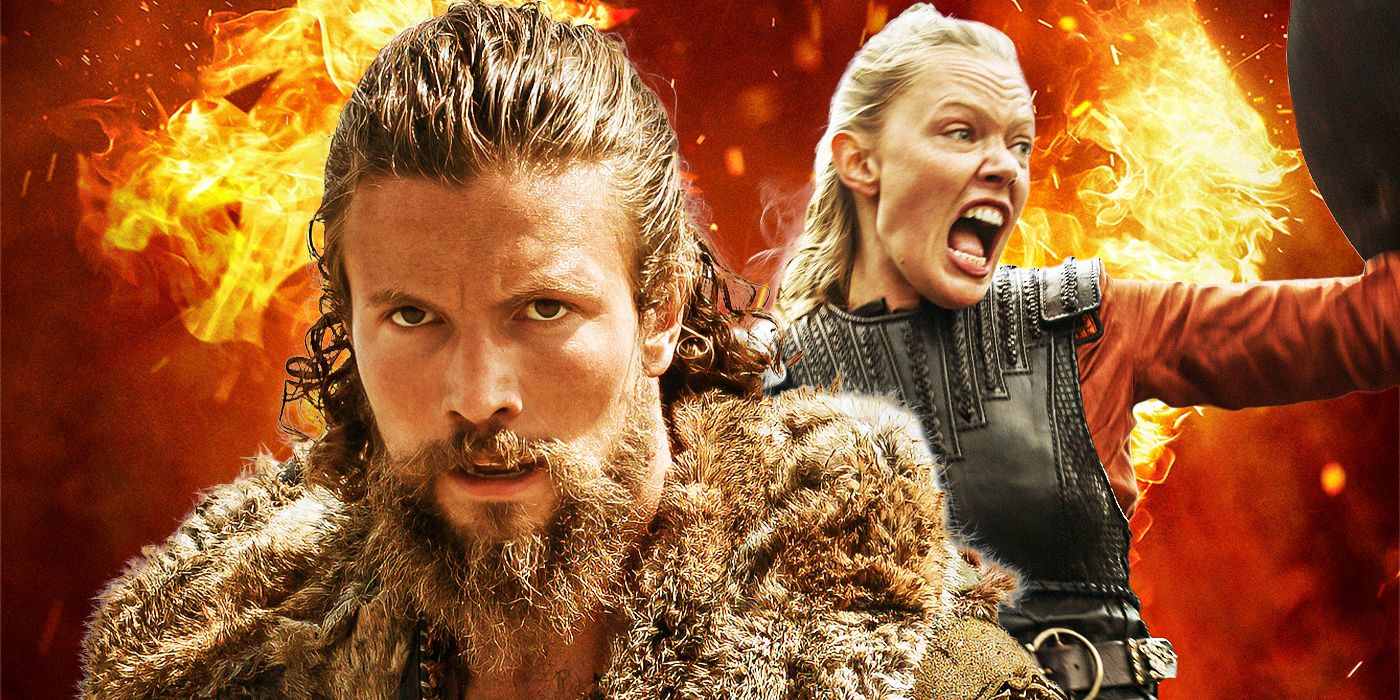
Shortly after the final season hit Netflix, Collider had the chance to sit down and talk all things Season 3, and the series as a whole, with showrunner Jeb Stuart. There was, of course, the matter of that bittersweet ending to address. But beyond that, Stuart also broke down the most challenging sequence to shoot in all three seasons, and spoke about how he tried to top the first two seasons with the third one. Stuart also talked about which real moments from history made it into the series, and also explained the choice to cast Goran Visnjic as Erik the Red. He also discussed the important role romance played in the series, particularly between Harald and Freydis, as well as Canute (Bradley Freegard) and Emma (Laura Berlin).
COLLIDER: I want to follow up with something you spoke with Collider about right before Vikings: Valhalla Season 2. You mentioned having to top the first two seasons in Season 3, but you couldn’t really go into more detail on that. Can you talk a bit about that challenge of having to top those first two seasons?
JEB STUART: I’m a fan of the show, too, so it’s kinda like, “What do I wanna do next?” It’s not just a matter of, “Oh my god, we’ve got to top that!” I believe in the review that you wrote, you touched on something that I connected with, which is that Valhalla, for me, was always a character-based action set. So, the more important piece was just getting these characters wrapped up in a way that I felt was really important to their arcs. The action I can always weave in. I’m an old action guy, so I love great action, and it was really important for the show that everybody bought in from the very beginning that we were not just doing set pieces. I always envision action to be almost like if you’re doing a Broadway musical, for example — dance tells the story, the song pushes the story along. So, the action has to push the story along. It has to push the characters along. You have to learn something new from every one of these pieces about that.
So, for me, that was the driving piece for me, in terms of the action. I felt that the story arcs were gonna top us in Season 3. In other words, we were gonna bring the band back, but not in a way that you thought they were gonna come back together. I think the rocks that I set in motion in Season 1 and picked up speed in Season 2 reached the bottom of the hill in Season 3, and that was really important for me when I started.
One thing that I love about this, because it is a character piece, is there’s essentially one giant family spread out across Europe doing all this, but they are so spread out in Season 3. We go further than we’ve ever gone before — we’re in Constantinople, we’re in Rome. Can you talk about the challenge of essentially keeping it grounded but spreading them months’ worth of travel apart from each other?
STUART: A little bit of that is just bending the historical stories just a little bit, which is fortunate for me. We did have these things like we did have Canute going to Rome. The idea, in my mind, of having a Viking kneel before a Pope is just mind-blowing. It would be mind-blowing in a Michael Hirst world of the Vikings. That’s a very, very cool thing. So that piece of that bigger family is there, and at the same time, we’ve got life in Constantinople with the Byzantine Empire. This is really the Vikings at its apogee. It’s so cool that we know that a Viking crawled up in the Hagia Sophia and scratched his name up there in the top of the dome.
So, I think for people who only think of Vikings as being sequestered in the cold Baltic, to be able to see that azure blue water of the Mediterranean is an important piece because they did get there. They not only got there, they thrived there for over 100 maybe even 200 years, depending upon what history you believe.
I love that, too, because when we study history in school, we’re studying the Byzantine Empire, we’re studying the Vikings, we study all these things so separately, but they’re all happening at the same time, and I thought that illustrated that really well.
STUART: It did. Also, the Byzantine part of the Catholic church really was the Roman Catholic church through the darkest periods of time in Rome and then as Rome began its ascent again, after the 6th century. The Byzantine world started to come under increasing threat from the rising Islamic world around it. So, it’s a fun place, and I hope our audience goes deeper into some of those stories because it’s a universe that was completely… To put it into a Viking perspective, for Leif and Freydís to come from a small settlement in Greenland and be exposed to places like London or Constantinople — Constantinople may have had a million people in it at the time — that’s just mind-boggling. The biggest city in Europe might have been Cologne, which had 40,000. So, 40,000 to a million people, it’s really hard to dramatize that. Fortunately, I have three great characters who were very expressive and could understand that, and I think they bring that out in the show.
London Bridge Was the Most Challenging Sequence in ‘Vikings: Valhalla’
Touching on the action for a second, across the three seasons, what was the sequence that was the most challenging to pull off?
STUART: Without a doubt, the pulling down of London Bridge required a lot of planning. That’s big for a movie, much less a television series. What we had to do is take resources, and I was very fortunate to work with not just great visual effects artists but great special effects artists in Ireland because we had to build lots and lots of pieces to that, and we had to plan it. You’re having to work with a director who’s like, “Just trust me, this is gonna work.” That type of thing. And bringing in the proper horsemen to be able to ride a horse to the edge of a bridge and pull it up. It’s Ireland, things are slippery in Ireland. A lot of moss grows in Ireland and stuff like that. I’m worried about that. So that, from a technical standpoint, was big.
The closing battle that you referenced in your review was obviously a big deal to pull off, but we got to work with a great group of extras who were very special, and who have been part of the Vikings family for a long, long time. If I were just to go out into any town in the world and try to gather 200 people and say, “We want to play Vikings for a bit,” they wouldn’t know what to do. Our group really knows, and they adapt, and we trained them. But we had to have new weapons for the Byzantine warriors, we had to have new uniforms for them, we had to have new fighting techniques. The swords are smaller, they’re not working with axes as much as they used to work with them. So, all of those little nuances for our audience are fun because it’s a different armory, it’s a different battle style, and we wanted to give some time for that. Also, Harald is the emperor’s bodyguard. How did that happen? That was a very cool piece of history that was fun to dramatize.
There were a lot of little moments, like the fact that Harald spent so long in the Byzantine Empire, that I was looking up as I was watching. Some of it is so big that it kind of feels like it was dramatized for the sake of a show, but this stuff really did happen.
STUART: [Laughs] That’s true. For me, in order to have Canute where he is and what’s going on back in Norway and where Harald would have been at that time, there’s a lot to choose from. So, it was good that many of the stars aligned at that point.
I know you conceived of these three seasons as sort of a triptych, to use a word that you’ve used before. If I remember correctly, Seasons 2 and 3 were filmed concurrently, or very close together.
STUART: Very close together, but we definitely had a hiatus between the two of them.
The Ending of ‘Vikings: Valhalla’ Is More Bittersweet Than Cliffhanger
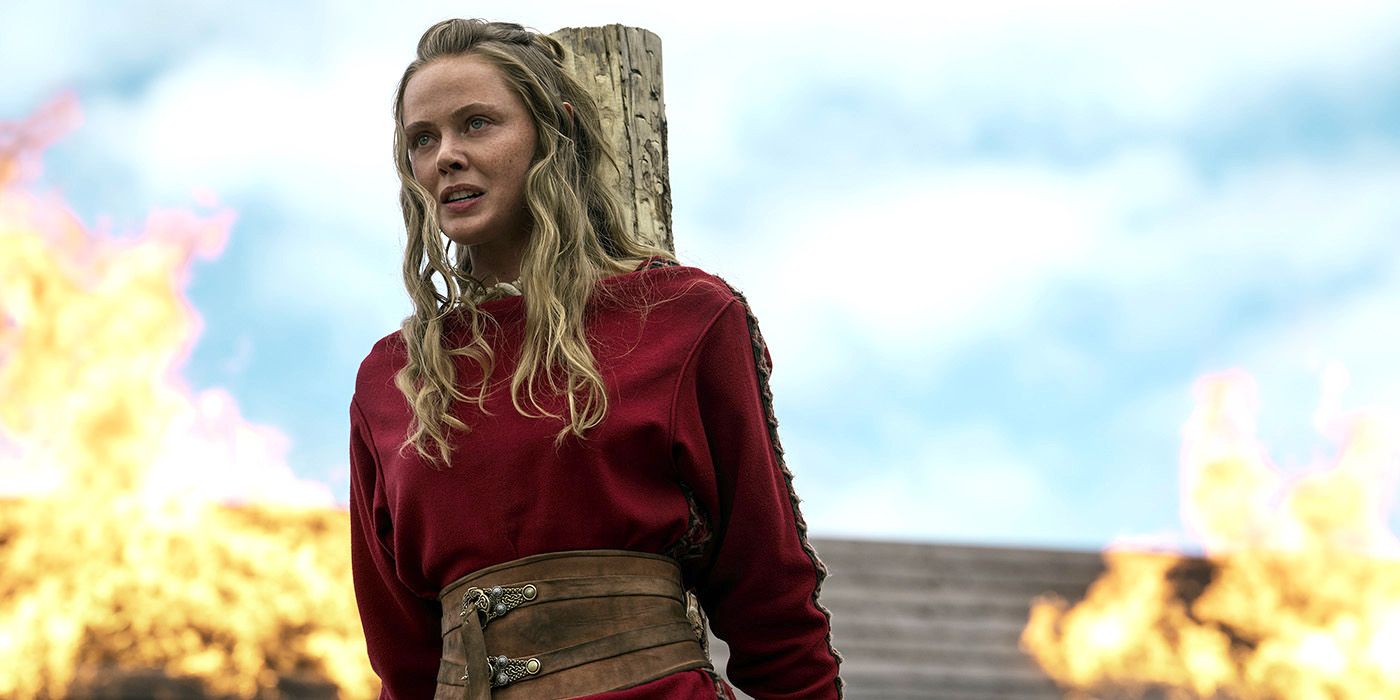
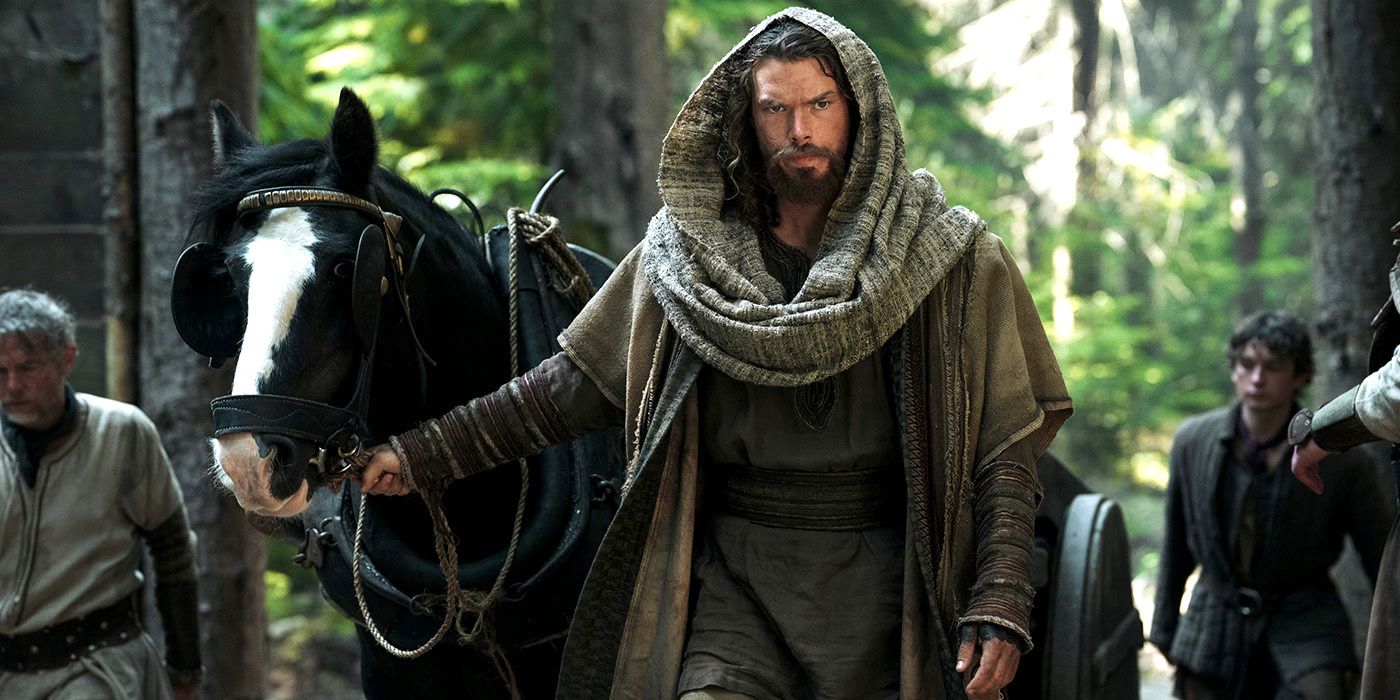
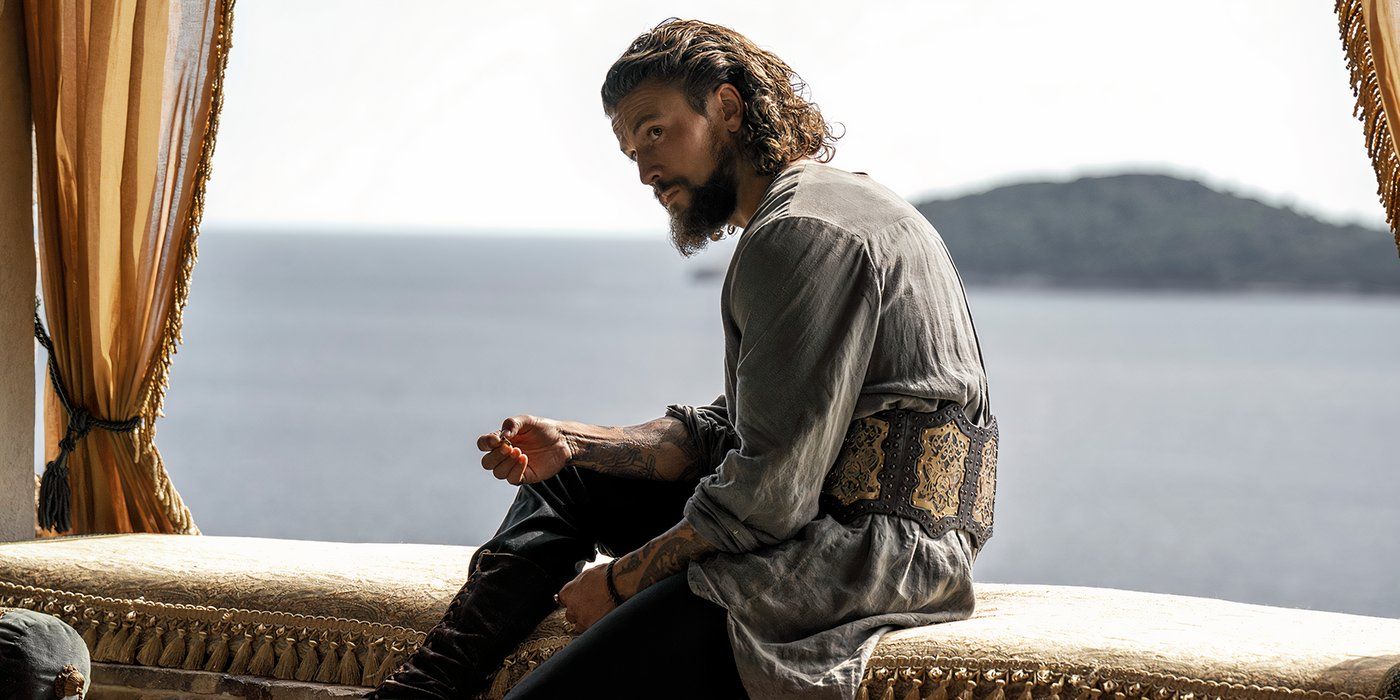
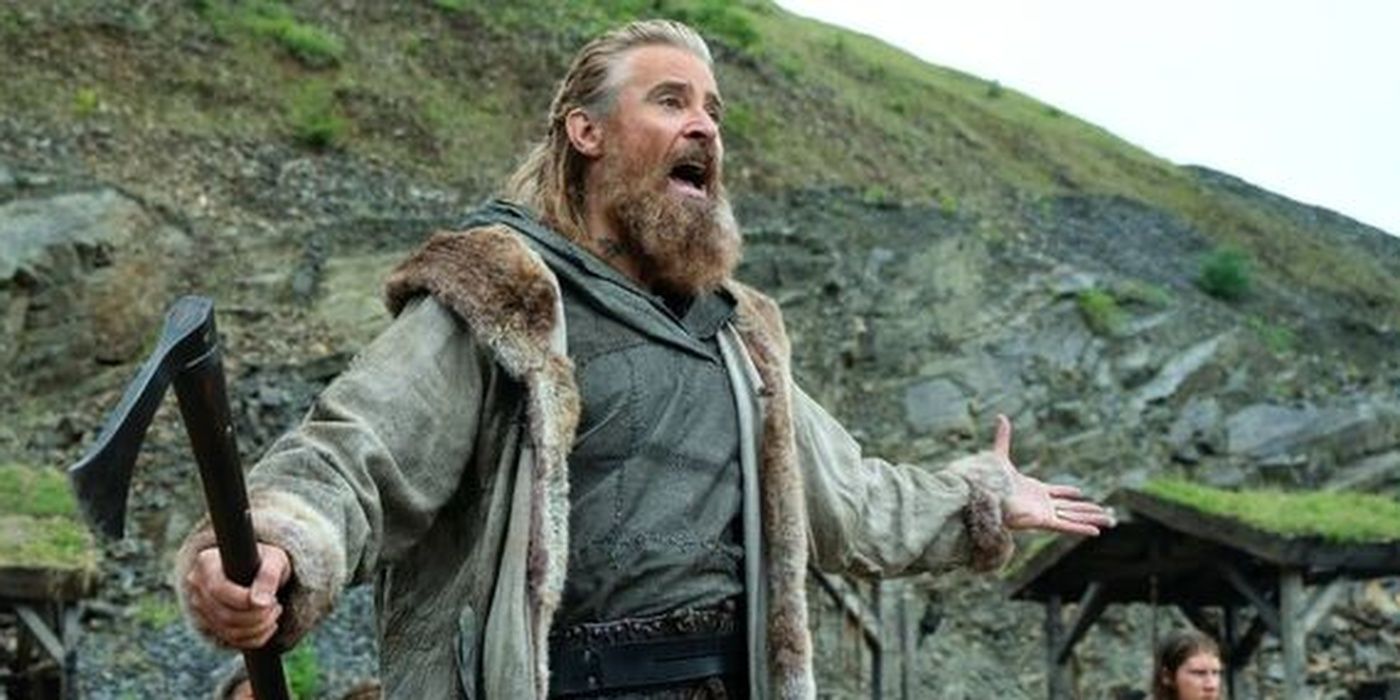




As you were going into Season 3, was there anything that had to pivot from that original vision of the triptych as the train was already in motion?
STUART: In my original concept, I wanted Freydís and Leif to return to Greenland and confront Erik. I pivoted from that for one really important reason, which is, I could have brought them back early, we could have had that, but then the next “what if” is Leif leaving for the New World. I didn’t want to leave the audience with this piece which felt like more of a cliffhanger, whereas if they are leaving together, what I’m envisioning is within 15 to 20 minutes out there on the water, they both realize that they have different plans. They have different ideas, and yet they’re joined by brother and sister and they’re joined by a need, a drive to find this new place. Freydís needs a new home for her people. Leif needs this to close the Mariam loop of, “Use your life. Do something really grand with what you’re doing.” So, I felt like it was a much better decision to have them leave Harald at the end of Season 3.
You mentioned Erik, so I wanted to bring him up because he has been this specter in the first two seasons, kind of looming at the back of Leif and Freydís’ mind, and we finally get to meet him in Season 3. Can you talk about building that anticipation and drawing that line? He doesn’t appear to be as much of a monster as they painted him to be, but he’s also quite a scary man.
STUART: You put your finger on it in your review. We first started talking about Erik the Red way back before I started pitching this. The initial ideas that I was being sent from agents were MMA guys, big old guys like this, and I was like, “For our audience who’s used to powerful Vikings, we know better. We know that just having power doesn’t get you anywhere.” And I started thinking, we are seeing a picture of this father who has pushed Leif to go do this, pushed the son out like that, and molded his daughter in his image. What happens when you give young people the ability to take those tools out into the bigger world and to do stuff that their father never would have imagined in his wildest dreams?
What Goran [Visnjic] gave us is a much more cerebral Erik. He’s a guy who has the physicality to fight and kill and do whatever he has to do and live up to his legend. But he is also the fellow who could send these two very powerful ships off into the world and then see what comes back to them. And he’s surprised. I think what comes back to him is a daughter who went out as sort of a clone of the father and comes back a totally different woman shaped by so many different other issues. And a son — I think when that day of reckoning did happen, Leif did return as a full-born Christian, and that was something he was not expecting.
It was an inspired casting choice because he threads the charming, like, “Yes, I can see why people would follow him to Greenland,” and also pretty damn scary all in one.
STUART: Sam [Corlett] and Frida [Gustavsson] are pretty damn beautiful people, too, so he had to be. [Laughs]
Romance Was an Important Part of ‘Vikings: Valhalla’
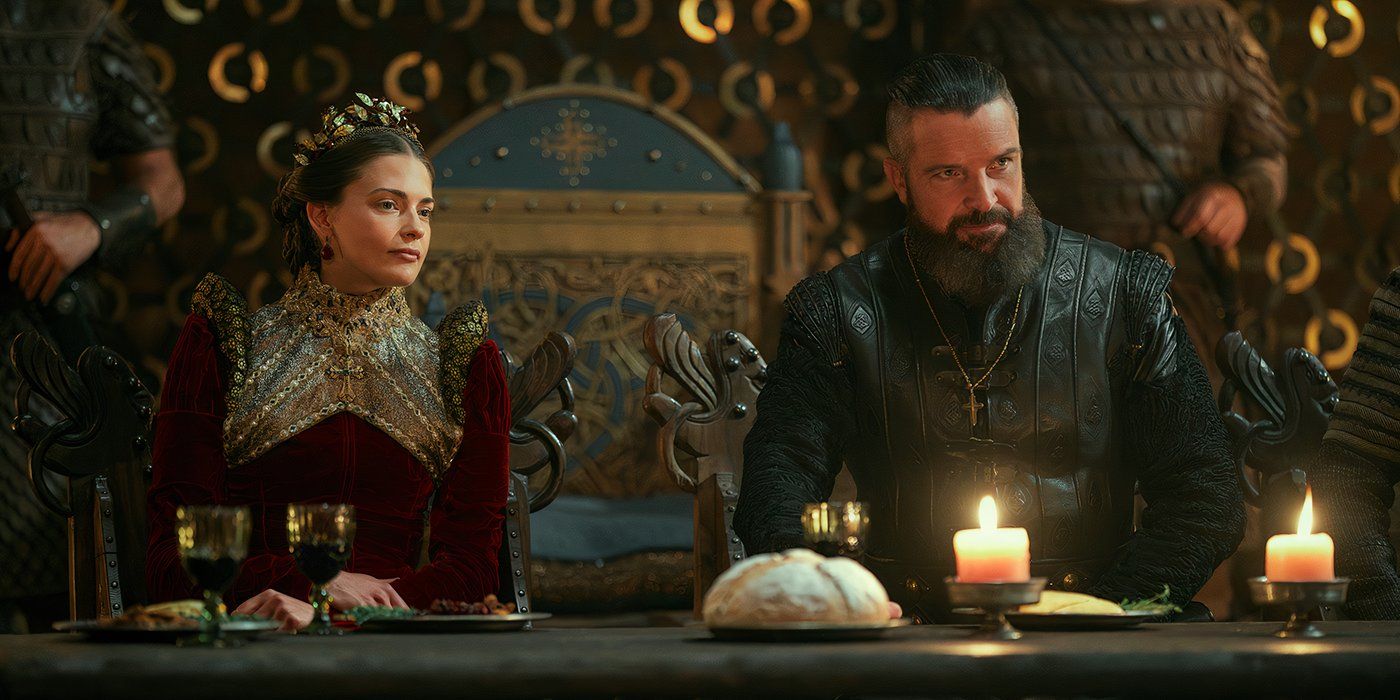
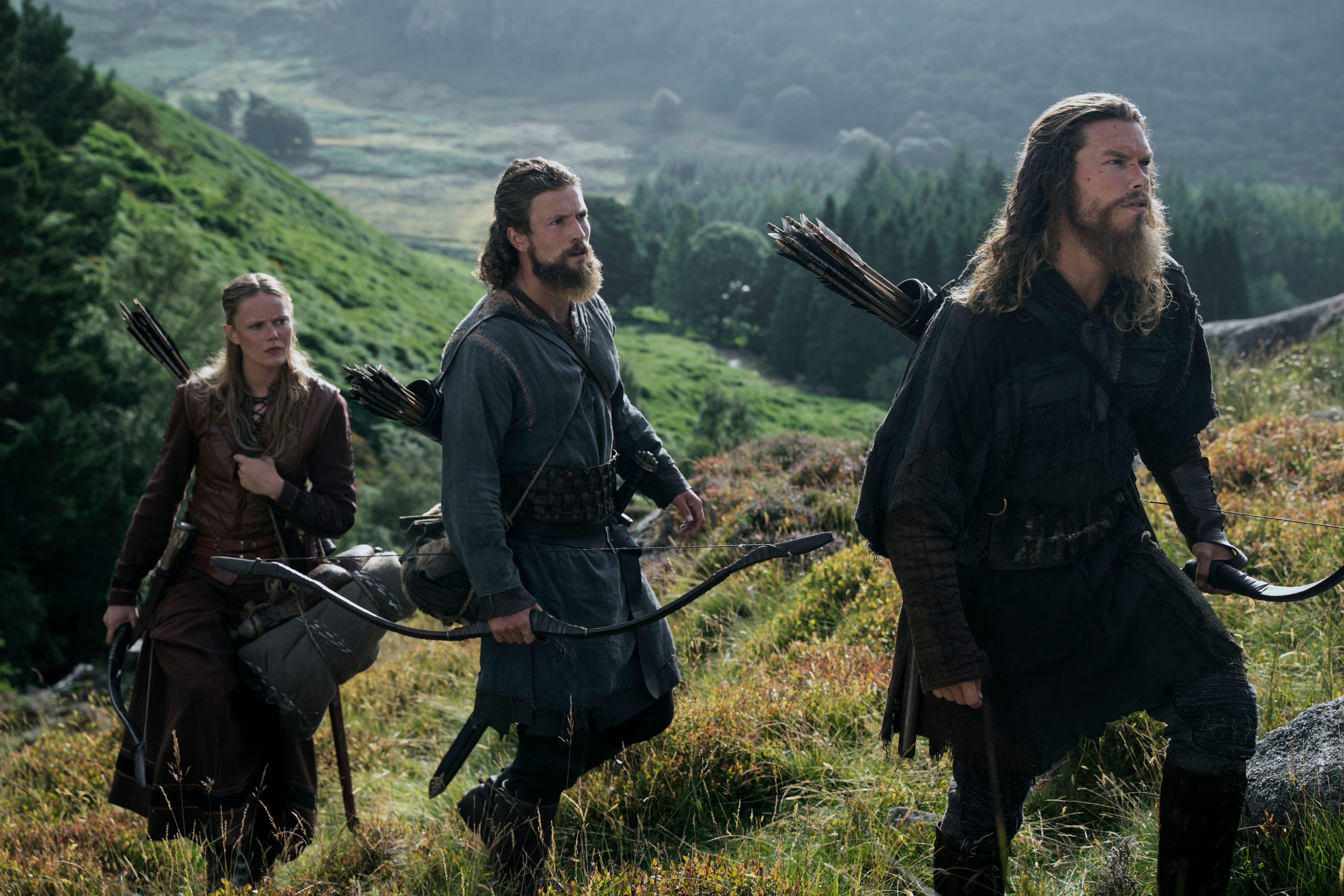


I want to ask you something really selfish to my interests with regards to the show as a whole. I feel like these action-driven period pieces don’t tend to focus on romance so strongly, and it’s so clearly at the forefront in all three seasons. Was that a conscious decision, or did that just spring up organically as the show was being developed?
STUART: It was conscious from the very beginning. I wanted there to be electricity to the Harald and Freydís part of the story that starts clearly born on passion. That’s who these two people are. It helps the audience to, very quickly in the pilot, suddenly understand who Freydís is and understand who Harald is. Harald is a bon vivant when we first meet him. He’s the guy who’s, “I’m the Prince of Norway, I’m going to be the future king, get in my bathtub,” that type of thing. Freydís is on a mission, but she’s very self-centered about her mission. The cross is on her back. She can have sex with this guy and not lose sight of what the greater goal is. In fact, she might be getting something from this Prince of Norway, which helps her to find the person she needs.
What we end the story on are two people who have massively evolved. They had a child together. Their romance has suddenly become love, and then it becomes a really incredible, enduring friendship that so many people have in their lives where they have fond memories of each other, but they also have an incredibly grounded respect for that. That’s because their fates have been, so to speak, guided by that relationship. Also, it’s gonna continue to guide them in future years. So, to your point, the romantic relationships had to be on par with what we were trying to do with these characters as a series, and I’m very happy with that. That credit really goes to these wonderful actors who played them.
One romantic relationship I just want to touch on, and you touched on it, was the great one between Canute and Emma, which really happened. It looked on paper like this was an arranged marriage that would benefit both people, but they fell madly in love with each other, and they were married for, I think, almost 30 years. It was an amazing relationship that reaped all sorts of benefits. Of course, this doesn’t happen in our series, but very shortly after our series ends, when William the Conqueror comes, 1066 happens, that full circle happens and women lose their rights to vote, lose their right to own property, lose their right to marry who they want, all those things disappeared in 1066. So, for me, the loss of those rights, that wonderful egalitarian culture that was part of the Viking era, 1066 is the natural end of the Viking era. We were very close to that in our show.
As soon as they brought up this teenage boy named William, I was pointing at the screen, going, “Oh, no. I know who this is!” And sure enough. [Laughs]
Will There Be More Seasons of ‘Vikings: Valhalla’?
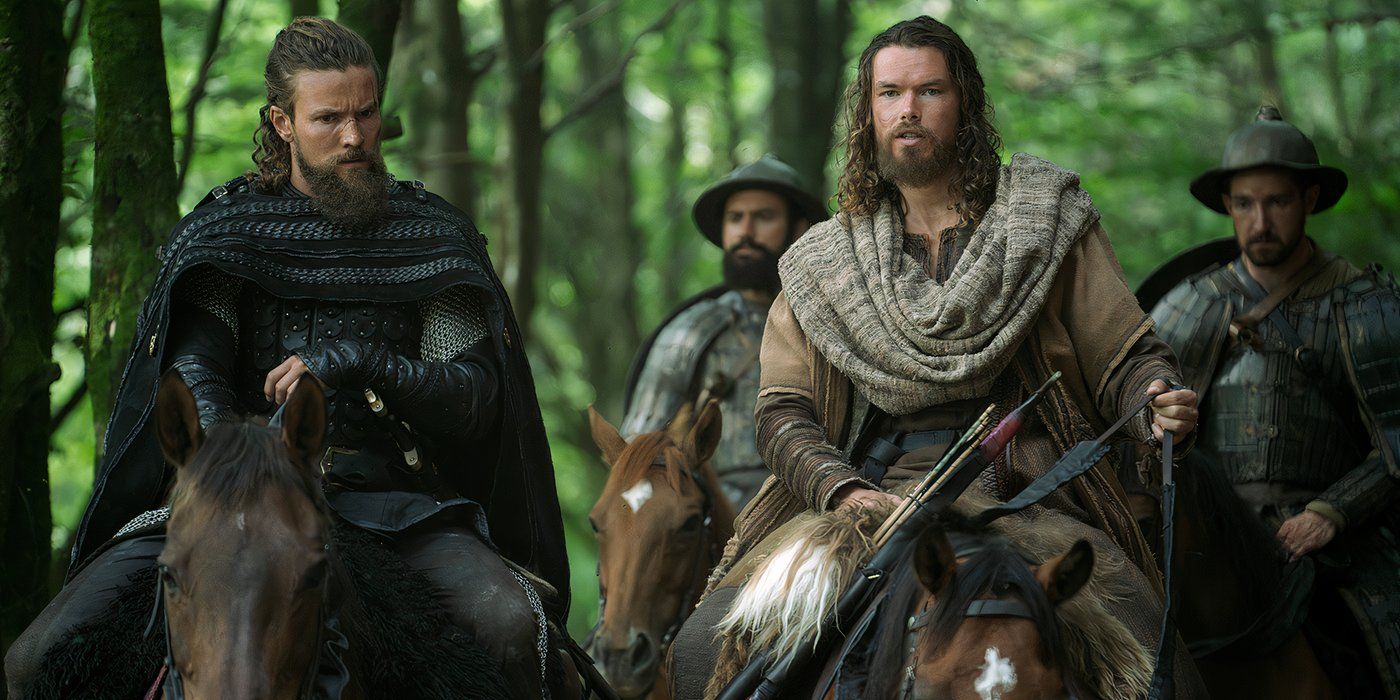
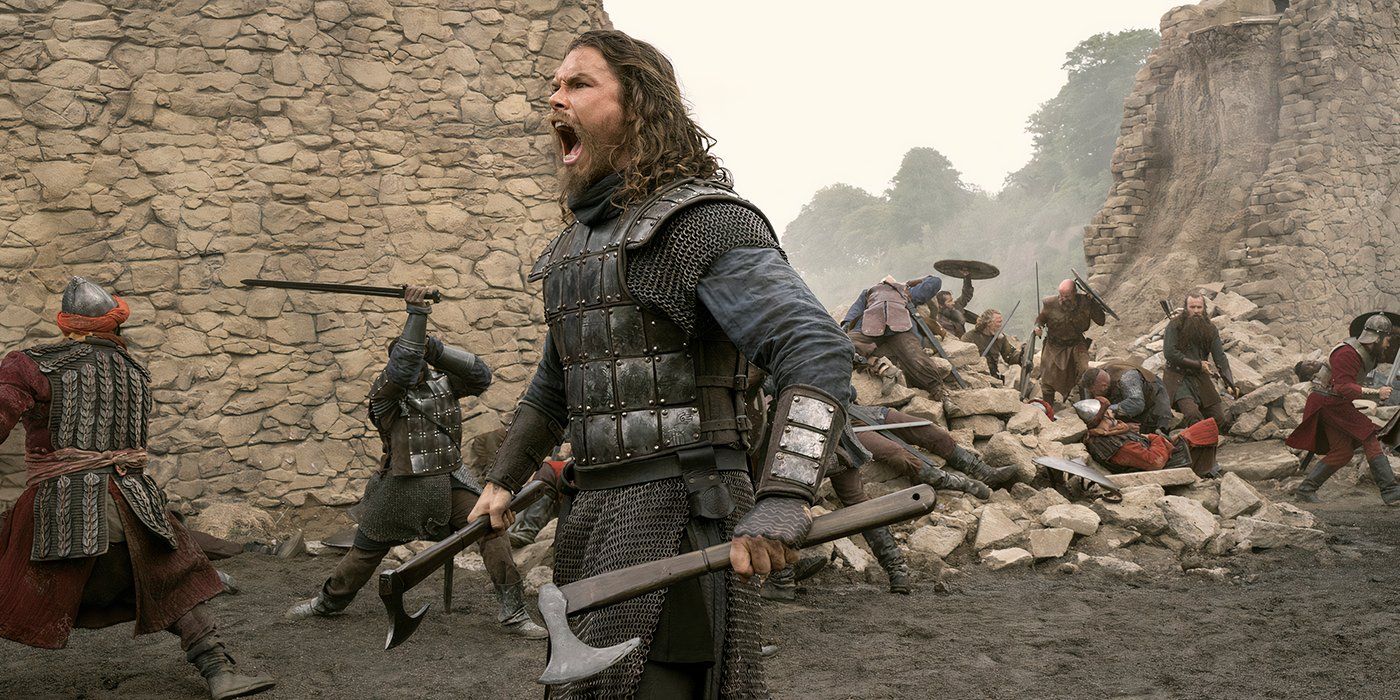
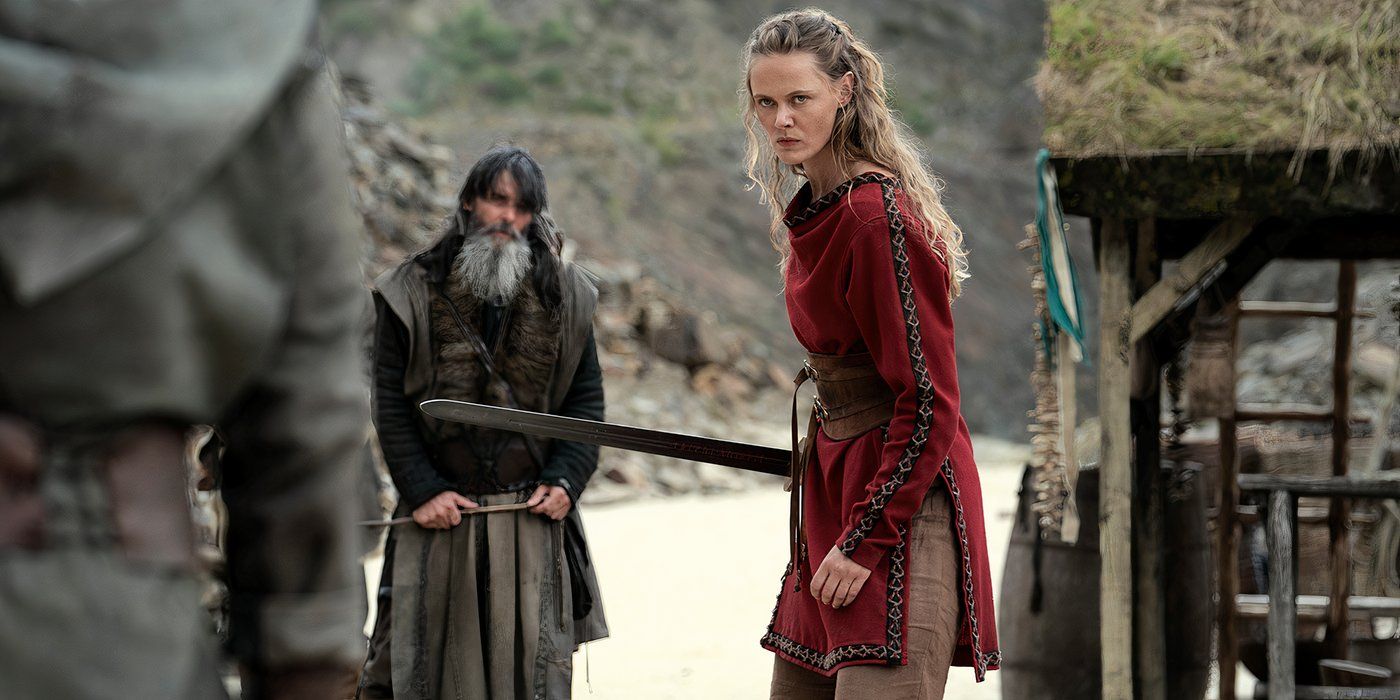





I know when you spoke to Steve for Season 2, there was talk of wrapping up these three, and then there’s potential for more down the line. Is that something you’re still thinking about?
STUART: Since we never know when we start a show how long it’s gonna go, or what the audience reaction is gonna be, that sort of thing, Valhalla was always designed with our characters with this arc in mind. It was like, “This is where we were gonna be at the end of three seasons,” and I’m very, very happy for this. If, in fact, we were ever to do [Seasons] 4, 5, and 6, or another show to take us to that conclusion, that 1066 moment that we were talking about, there is a story out there. But what I prefer to do is do the exact same thing that I did with Valhalla, which is completely spend the time to flesh out these wonderful characters and to see where they go. There are a lot of great surprises out there that I think the audience doesn’t know. We found stories of Leif reaching Scotland and being shipwrecked when he was coming back from Norway. What happened to them there? And Harald’s whole story is just fascinating. So, I think there’s a lot there, but I’m very happy with where we ended this.
Speaking of that ending, I know it’s impossible to end anything historical conclusively because the world hasn’t ended, therefore the story is going to continue, but was there ever any talk as you were writing it of putting a more definitive bow on this, or was this, “And they are off on to the next chapter of their lives…” the intent as you went into Season 3?
STUART: You couldn’t have said it better than you, but you did. It’s bittersweet, and I knew it was gonna be bittersweet. You look at my movies — I don’t like ambiguous endings. In Die Hard, they walk off, and the fluttering bearer bonds come down, or in The Fugitive, Harrison Ford climbs in the car with his pursuer, and everything is good. That’s my kind of lovely ending. I knew from the beginning that there would be that part of Valhalla, but there would also be a part that we always talk about as sort of melancholy. They’re going into a new future, but that Viking world that they were a part of is never gonna be the same. It’s never gonna be the same. England is now enmeshed in the Viking world. So, that larger family has Viking roots and Saxon roots. It also has Norman roots which, by the way, are Viking roots. So, it’s all of this incredible circle, but that wonderful, pure Nordic Viking piece is over. That’s the bittersweet part that the audience has to accept is that we’re coming to that edge of the cliff at 1066, where it will be no more.
I remember talking to Michael Hirst years ago when we were just chatting. I asked him what he missed about his show, and he said, “I feel a sense of melancholy that that particular period is over, and you will probably feel this when your period is over.” And I do. It’s a tough thing. Part of that is the wonderful people you work with, and part of that is I know what comes next, and we should feel bittersweet about this ending.
Looking back at Season 3, is there a moment, a sequence, an arc, something about it that stands out to you as the highlight, be it either from a production standpoint or from a finished product standpoint?
STUART: I’m actually really happy with each of the main characters’ arcs. I really am. Also, I think one of the big surprises for me with was Earl Godwin and Gytha, his wife. I hate using the word “Easter Eggs,” but if you’re a history buff, you’ll know his two sons, which he rescues in that great scene, that action scene. David Oakes, who plays Earl Godwin, is a spectacular horseman and he’s one of our only actors who can do that spectacular ride — Frida is a phenomenal horsewoman, as well. But we realized that those two boys, specifically Harald Godwinson, his oldest son, are groomed to be the king that really was supposed to be the great English king. He was half Viking, half Saxon. In real life, he could speak multiple languages. He was not only the Henry Kissinger of England, but he was also a spectacular warrior like his father and his mother.
He goes up and defeats our Harald Sigurdsson at the battle of Stanford Bridge, and if he hadn’t had to beat Harald, he probably would have been prepared when William the Conqueror comes over, and he wasn’t. Because he’s defeated by William the Conqueror, all of the Viking era goes out. It’s a wonderful little piece for our fans who are history buffs to kind of see how closely-knit, as you said, this Viking family and English family are really ameshed by this point. That’s very cool for me.
What’s next for you?
STUART: I’m actually down in New Zealand, working on a wonderful show for Netflix called East of Eden, which was written by Zoe Kazan. It’s a big change from the Viking world, but it’s really a wonderful show.
Vikings: Valhalla Season 3 is available to stream on Netflix in the U.S.





